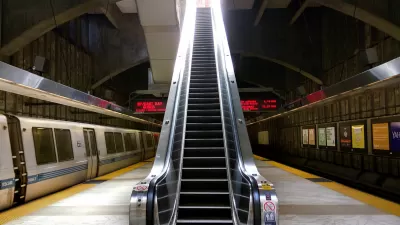Program proponents say this “visionary” endeavor “heralds a new era of human presence and economic activity beyond Earth.”

According to an article from The Economic Times, the U.S. Department of Defense has contracted with defense and aerospace company Northrop Grumman to build a lunar railway in preparation for a permanent human colony on the Moon.
“[T]his visionary endeavor aims to facilitate the seamless transportation of both goods and people across the lunar surface, heralding a new era of human presence and economic activity beyond Earth, as per a report by The Sun,” the article states.
The project, dubbed “Moon Train,” might sound silly, but the lunar surface area is equivalent to the size of Africa, making railway infrastructure critical to transport the materials and equipment needed to explore and colonize the Moon. The contract, part of the 10-year Lunar Architecture (LunA-10) Capability Study, covers research around the basics of developing a lunar rail network, including resources, construction using robots, inspection, maintenance, and repair. The final report is expected this June.
This tangible step toward colonization of space follows hypothetical and occasionally heated debates last year prompted by two books on the topic: City on Mars: Can We Settle Space, Should We Settle Space, and Have We Really Thought This Through? by Kelly Weinersmith and Zach Weinersmith and The First City on Mars: An Urban Planner’s Guide to Settling the Red Planet by Justin Hollander (both mentioned in Planetizen’s Top Planning Books of 2023). While many people are fascinated and excited by the idea of building cities from scratch on new planetary bodies, others say our attention and resources should be focused on solving problems on the planet we currently have.
FULL STORY: Will the US take people to the moon with ‘Moon Train’? Here’s all about the Lunar Transport

Maui's Vacation Rental Debate Turns Ugly
Verbal attacks, misinformation campaigns and fistfights plague a high-stakes debate to convert thousands of vacation rentals into long-term housing.

Planetizen Federal Action Tracker
A weekly monitor of how Trump’s orders and actions are impacting planners and planning in America.

In Urban Planning, AI Prompting Could be the New Design Thinking
Creativity has long been key to great urban design. What if we see AI as our new creative partner?

Pedestrian Deaths Drop, Remain Twice as High as in 2009
Fatalities declined by 4 percent in 2024, but the U.S. is still nowhere close to ‘Vision Zero.’

King County Supportive Housing Program Offers Hope for Unhoused Residents
The county is taking a ‘Housing First’ approach that prioritizes getting people into housing, then offering wraparound supportive services.

Researchers Use AI to Get Clearer Picture of US Housing
Analysts are using artificial intelligence to supercharge their research by allowing them to comb through data faster. Though these AI tools can be error prone, they save time and housing researchers are optimistic about the future.
Urban Design for Planners 1: Software Tools
This six-course series explores essential urban design concepts using open source software and equips planners with the tools they need to participate fully in the urban design process.
Planning for Universal Design
Learn the tools for implementing Universal Design in planning regulations.
planning NEXT
Appalachian Highlands Housing Partners
Mpact (founded as Rail~Volution)
City of Camden Redevelopment Agency
City of Astoria
City of Portland
City of Laramie





























